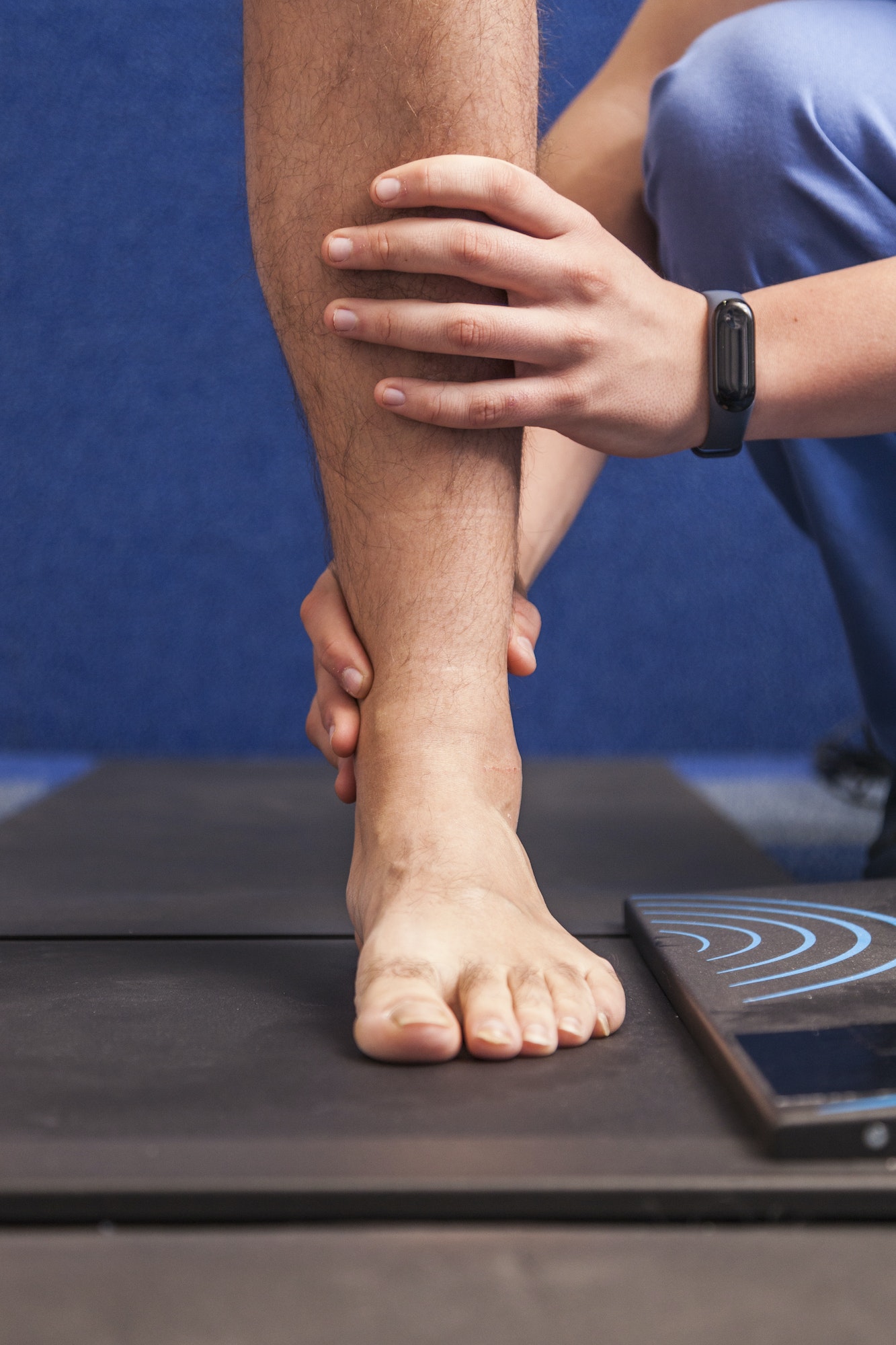Table of Contents
Meet the Achilles Tendon
First, tendons are tissue cords that connect muscles to bone, and the Achilles tendon is the largest one in the body.
When people think about the Achilles tendon, most just picture Greek war hero Achilles going down when an arrow pierced his heel. However, this tendon extends further past that area. The Achilles tendon travels down the back of the leg from the calf to the heel bone. There are several areas that are recognized, and each is susceptible to injury:
- The tendon area closest to the muscle is called the myotendinous junction. Typically, most of these injuries occur in younger athletes.
- Injuries at the lower third of the tendon occur in what is known as the watershed area. This area is home to injuries of middle-aged folks who have developed musculoskeletal imbalance from sports or those who have a standing job.
- Finally, pain at the insertion of the Achilles – insertional tendonitis – occurs later in life and is associated with wear and tear and degeneration of the tendon. This is often associated with people who are carrying more body weight than ideal.
Symptoms
Be on the lookout for any of the following symptoms. They may indicate that you have Achilles tendonitis and may need to see your podiatrist.
- Limping or unable to walk normally, or difficulty rising on your toes or movements like stepping on the gas pedal.
- Swelling and pain in the area behind your heel, ankle, or lower leg.
- Stiffness or pain during your first steps of the day or getting up from inactivity.
- Pain in the back of your heel or lower leg, which worsens during or after strenuous activities.
- Struggling to perform regular activities due to the pain.
Causes
Individuals with tight calf muscles, tight tendons, flat feet, or arthritis are prone to Achilles tendonitis. Anyone can suffer from it. Athletics are commonly associated with this pain; however, many people who aren’t active also develop these problems. Pain in the Achilles tendon can be caused by any of the following:
- Overuse of the calf muscle and Achilles tendon
- Improper training routines
- Exercising without a proper warm-up or stretching
- Inappropriate footwear
- Poor biomechanics, including people who have tight muscles
- Excessive body weight
- Aggravation by injury or other conditions
Treatment
There are many courses of action you can take to treat any pain you’re experiencing.
- Try at-home techniques: First and foremost, the best thing to do is rest and stop any activity that may be causing the problem. Icing the area of pain can also help by reducing swelling and stopping the pain cycle. Aim for icing three to four times a day for up to ten minutes at a time.
- Get in proper footwear: Shoes that control foot function and elevate the heel put slack in the tendon and can provide relief. Avoid flat shoes or no shoes… even around the house. Wondering what are the right shoes for you? Your podiatrist can help!
- See your podiatrist: If the pain persists, make an appointment with your board-certified podiatrist. Pain that exists longer than six weeks indicates that there is more of a chronic problem than acute inflammation, which is harder to treat and takes longer to resolve. Don’t allow these problems to persist. When you see your board-certified podiatrists, they may recommend one or more of the following:
- Stretches and strengthening exercises to help improve elasticity and strengthen nearby muscles
- Oral or topical medications to help with pain and swelling
- Removable boots or casts, which can allow the tendon to fully rest for a few weeks
- Custom-fitted orthotics to help control the motion of your feet and reduce your chances of recurring tendonitis
- An MRI to determine if a tear is present
- Shock wave therapy in cases of partial degeneration, where the tendon is allowed to regenerate and form new tissue. International research has shown the value of this treatment for over 20 years.
- Regenerative injections, which use materials to help the tendon heal for long-term relief and not simply short-term gains
- Surgery if the tendon is torn and degenerated and can’t heal by itself
If rest and ice aren’t alleviating your pain, it’s time to call us and schedule an appointment with one of our caring physicians. Left untreated, tendonitis may become chronic and more difficult to treat. However, our board-certified podiatrists are experts in dealing with foot, heel, and ankle conditions. Our goal is to get you back on your feet and performing the activities you love.

Meet Weil Foot & Ankle Institute
By: Weil Foot & Ankle Institute, Published: May 20th, 2022
Review By: Lowell Weil Jr., DPM – Feb 16, 2024


